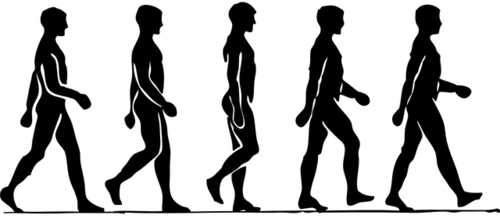Insight
In vitro or in vivo? The question before modern science
Abstract
Modern science, which has so far monopolised most knowledge and relied chiefly on in vitro experiments and double-blind trials, has now an opportunity in the corona pandemic to verify its stand towards holistic medicine. There is an impending necessity to examine the methods of mental discipline, which the ancient sciences followed as they postulated their basic tenets. This article puts forward the advances and failures of modern sciences as far as human health is concerned.
The mind is the means of enquiry and the receptacle of knowledge for every scientist — ancient or modern. A mind observes, infers and builds hypotheses which need to be tested upon the hard ground of matter for them to be accepted as valid. Science as it came to us from the medieval times is rich with discoveries that have radicalised our lifestyles. A cutting-edge analysis that bewildered intellectuals, supported by statistical validity that could induce massive lifestyle changes, is the trend that modern science followed as it strengthened its stance of monopoly over knowledge and distanced itself from the ancient sciences, calling them myths and madness. But today we see lifestyles becoming mechanised and automatic, destroying creativity and tethering mental capacities to digital sensors. We have to take care that these innovations which took birth to appease our material needs do not blanch our inspirations and our minds do not stop striving towards creative goals in leading us to intuitive and spiritual heights.
It is interesting to note that every scientist of modern times is depicted with an instrument or laboratory beside him or in his background and which has helped him in his discoveries, whereas Ancient scientists or ṛṣis were depicted in a pensive mood or shown in groups discussing philosophical matters. These images are enough for us to understand the shift in the purpose of scientific explorations from ancient to modern times. Ancient scientists were concerned with calming the mind and bringing synergy between individual thoughts so as to achieve a universal acceptance and for this they used sense-detachment as the means. Modern-day scientists, on the other hand, are concerned with matter and the perfection of the senses so that matter can be thoroughly absorbed into its recesses and the human mind does not make the mistake of doubling itself in its individual ignorance and miss the universal truth. An integration of both these approaches is possible when it is known that mind is the field of play, both for the ancient and modern scientists, and there are ways to surpass this mind and get in touch with the universal truth. This universal truth not only dawns at once as knowledge but gives the individual a perfect and uncompromising control over matter.
The vital functions of a living being can be classified into five motor functions, namely ingestion, ejection, locomotion, speech and procreation. The gnostic functions can be classified into five sensory functions called smell, taste, vision, hearing and touch. Mind comes in as a projection of human consciousness that links these senses and infers and makes assertions. Thus memory (smṛti), analysis (viveka) and discrimination (buddhi) are the chief functions of the mind. These three chief functions of the mind become the three chief knots, which make it impossible for the senses to learn what is subliminal or supraliminal to them, whereas plants and animals in whom the senses are not bound to the mind can easily access these ranges of knowledge to their advantage.
Unknotting the mind
The method of unknotting the mind is shown in the Indian sciences by superimposing the three chief functions of the mind upon the three chief modes of terrestrial creation. Memory is equivalent to tamas, the principle of inertia, as it holds the mind to an object and does not allow it to move beyond. Analysis is equivalent to rajas, the principle of kinesis, as the ceaseless to and fro motion of the mind between the object and senses becomes repetitive and exhausting unless it is properly regulated. Discrimination is equivalent to sattva, the principle of light tending towards balance between the earlier two principles of creation, as it puts a quick end to analysis by assigning a personal or utilitarian perspective to memory and elevates the sense-data to the level of experience. There are several such disciplines of yogic knowledge which occultly link matter with mind — like pancabhūta, saptadhātus, pancakośa, aṣtasiddhi, etc. without which a perfect control over the mind may not be possible.
But all this ancient knowledge is shunned by the modern sciences because they are accessible and are verifiable only by supra-sensual means. Modern psychology is still obsessed with matter and is reluctant to include paranormal and supra-sensual phenomena as greater avenues to supernal knowledge. An atavistic disbelief still forces the materialistic minds to depend upon the negative method of doubt as a means of scientific verification and deny the positive method of belief which transcends the mind and allows sense-refinement. This is where the modern sciences are unable to see the continuum between mind and matter. Several theories, like the principle of uncertainty, Big Bang theory, RNA world hypothesis, have in themselves the inklings of yogic knowledge, but they can never touch the crux of this supreme knowledge as long as they do not start their explorations with a positive belief.
One such case study for positive belief is the advent of the corona pandemic. Yogic knowledge sees each such upheaval or disease to be arising because of disequilibrium between the planes of consciousness and makes it an occasion for larger corrections to be invented or accepted. The dark forces that take shelter in the lower planes of consciousness try to reinforce their existence by keeping the masses under the blanket of ignorance. The divine forces that get nourishment from higher planes of consciousness make plans to deliver the ignorant masses out of the blanket of material ignorance by building bridges of life and light into the depths of matter and link it with the spirit. Let us see which side modern science takes.
Modern dependence on in vitro methodology
Modern science till now has been dependent on in vitro methods of laboratory analysis to prove or disprove any medical discovery even when it came to us from ancient ages. The flagship of ‘evidence-based medicine’, which devours, defeats and declassifies the chief tenets of holistic medical sciences and all its in vivo experimentation in the name of placebo effects or erroneous drug-trials, inevitably has to sink out of its own weight of unconnected evidences because their corroboration is based upon the subtle link between the vital and physical and the five-fold movement of vital force which the yogic sciences call as pancaprānaḥ. Furthermore, material evidence is not always an entry-pass to higher realms of knowledge so much as the flowering of experience out of the hard work of discrimination and analysis. By devising such ineffective methods scrutiny, the modern science has lost the opportunity of including vast supra-sensory knowledge that has been helping humanity for ages. It is now high time for modern science to understand and include the basic tenets of various holistic sciences and work hand in hand with them in averting the corona crisis.
It is now high time for modern science to understand and include the basic tenets of various holistic sciences and work hand in hand with them in averting the corona crisis. The very origin and nature of the corona pandemic is such that it is demonstrating large gaps of understanding that modern science has been consistently hiding throughout its success journey. If it accepts the holistic sciences and their positive method of belief and aids the spiritual descent, then there is a sure chance of its resurrection. If it continues to thrive upon the gulf dug by it between matter and spirit, that very gulf is sure to become its doom.
Dr. Venkatesh Palla, a member of SAIIIHR, is a practising homoeopathic physician at Bhimavaram, Andhra Pradesh, India.
Share with us (Comments,contributions,opinions)
When reproducing this feature, please credit NAMAH,and give the byline. Please send us cuttings.




